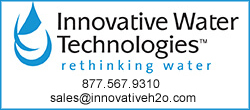|
|

|
  

1/10/2025
WT Staff
 Got water questions? Got water questions? Give us a call at 877-52-WATER (877-529-2837), or email us at info@wtny.us
January 10, 2025 953 am EST
SaferStates.org for drinking water source protection
Drinking water source protection
Why so much ado about hazardous spills, toxic releases at WaterToday? Toxic materials pollute drinking water sources, above and below ground. Hazardous materials spills reported to state authorities are shown on our map. The Toxic Release Inventory reports industrial discharges from federally regulated sites. There are landfills that leach contaminants to groundwater, industrial point source discharges regulated by national and state permits, municipal wastewater releases, combined sanitary and storm overflows and non-point source contamination, such as nutrient leaching off agricultural properties. In our CrimeBox column we cover the unreported releases of contaminants, the criminal violations of the Clean Water Act. All of these factor in to the security of drinking water sources, the subject of interest.
Recently, WT has been looking into the incidental contamination that comes from municipal wastewater. Toxics are shedding from homes into wastewater, the remediation of this situation will through public awareness and a change in consumer behavior along with limitations imposed on the producers of consumer goods.
A growing number of states have introduced and adopted new regulations to curb the use of harmful molecules in consumer goods. Some manufacturers have been cooperative with social pressure to make products safer, others have launched lawsuits to protect their patents and profits. While the policy-makers and industry lobbyists wrestle for control of this situation, we have looked at ways the average person can manage exposure in the home. We are reminded that labeling for harmful chemicals is not required in many instances, beginning to look for independent certification for those alternative goods and products that are free of harmful chemicals.
To the degree the public chooses the safer alternative products, the local drinking water supply can be protected.
See SaferStates.org, for more information here.
Streamflow Situation from the network of USGS river monitors in NY
Fair and 30 degrees in the city with a high of 37. Mostly cloudy, 16 degrees upstate west, heading for a high of 27. Light snow is likely overnight, mostly after 3 am, up to an inch of accumulation possible. Fair and 10 degrees at Massena International - Richards Field, the high 22 degrees. Tonight there is a 30% percent chance of snow coming after 5 am, less than a half inch accumulation in all.
Streamflows continue normal through the northeast, the northwest is mostly seasonal normal with Genesee River watershed running below normal to normal. The central drainage basin runs above normal in the Upper Hudson River watershed, shifting to below normal and much below normal by the Lower Hudson River and Long Island watersheds. The southwest drainage basin watersheds are running seasonal normal right up to the Ramapo River watershed in Rockland and Orange Counties, flows here are much below normal to low. The drought map retains Putnam and north Westchester in moderate drought. There are no active floods, nor extreme high or low flows to report.
Safe Drinking Water Advisories
The Safe Drinking Water Act is now 50 years old. Learn more about New York drinking water supplies and how these are protected here.
The central drainage basin is home to 15 million New Yorkers and industry relying on abundant fresh water supply. See our prior report, an example of streambed erosion impacting an important drinking water reservoir, here.
The new Serious Violator list is due to be released by EPA this week. See the stats for the prior quarter, how drinking water facility compliance compares in Ohio, New York, Georgia, Louisiana and California, here.
|
|
|
|
All rights reserved 2025 - WTNY - This material may not be reproduced in whole or in part and may not be distributed,
publicly performed, proxy cached or otherwise used, except with express permission.
|
|